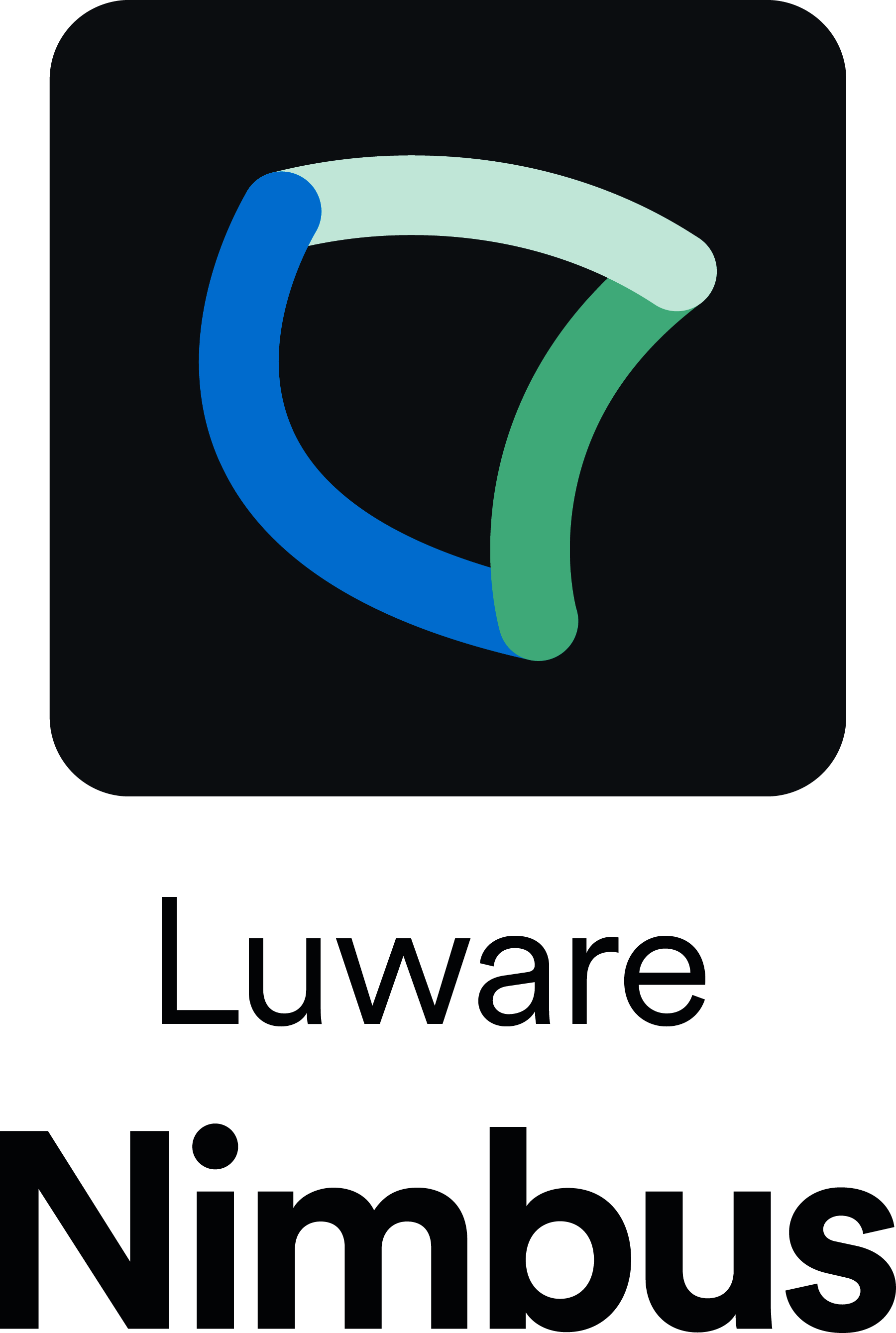Most cloud migration applications may be accessed from numerous devices and platforms. These applications are often web-based and may be accessed using any web browser on devices such as laptops, desktops, tablets, and smartphones. They are also compatible with a variety of operating systems, including Windows, MacOS, iOS, and Android. This cross-platform accessibility enables users to view and manage their cloud migrations from any location, at any time.
List of 20 Best Cloud Migration Software
IBM Cloud VMware, the most comprehensive solution for seamlessly transferring, overseeing, and expanding VMware workloads on the IBM Cloud. Specifically designed for enterprises, it offers advanced protection, agility, and efficiency to hybrid cloud...Read More IBM Cloud VMware
GS RichCopy 360 Enterprise revolutionizes data transfer and management with its cutting-edge cloud integration and server migration features. Enjoy lightning-fast file transfers between different cloud providers, Windows servers, and NAS devices. You...Read More GS RichCopy 360 Enterprise
Luware Nimbus is a customer service solution designed to elevate your communication and streamline IT processes. Fully integrated with the Microsoft technology stack, our Contact Center as a Service software empowers organizations to simplify and opt...Read More Luware Nimbus
MultCloud solution for managing multiple cloud storage accounts effortlessly. It offers a user-friendly interface for seamless file transfers, synchronization, and backups across various cloud services. Experience a streamlined cloud management proce...Read More MultCloud
Migrator Wizard G Suite, the perfect solution for effortlessly migrating your G Suite data to your desired account. This intuitive and effective tool guarantees a trouble-free transfer of all your G Suite data. Say goodbye to the tedious task of manu...Read More Migrator Wizard G Suite
Metalogix Content Matrix is a Sharepoint migration solution. Our robust software provides a secure and collaborative environment for seamless data transfer, tailored to meet your unique requirements. Whether you prefer cloud, on-premise, or hybrid ca...Read More Metalogix Content Matrix
Proventeq is a Sharepoint migration solution for your company. We conduct a comprehensive pre-migration analysis and offer selective migration features to securely transfer your data. Our cutting-edge migration tools ensure a smooth deployment and gi...Read More Proventeq
the AWS Snow Family - an extensive range of services and tools specifically designed to facilitate efficient and budget-friendly transfer of data to and from the AWS Cloud. With three robust solutions - AWS Snowball Edge, AWS Snowmobile, and AWS Snow...Read More AWS Snow Family
Power365 is an innovative suite of solutions from Quest Software that facilitates businesses in quickly restoring operational functions, ensuring data accuracy, and rebuilding customer trust. This comprehensive suite enables stakeholders to effective...Read More Power365
Next-Cart solution for hassle-free shopping cart migration. Our revolutionary SaaS software is designed to effortlessly transfer all your stores important data, including products, customers, and orders, to any eCommerce platform of your choice. With...Read More Next-Cart
IBM Cloud Mass Data Migration - tool that simplifies the movement of massive data sets to the cloud, while ensuring top-notch performance and security. This solution streamlines complex migration processes, allowing businesses to focus on growth and...Read More IBM Cloud Mass Data Migration
Google Cloud Migrate for Compute Engine – solution for seamlessly transferring applications and workloads to the Google Cloud platform. With a wide range of products like AI, machine learning, storage and databases, you can easily enhance perf...Read More Google Cloud Migrate for Compute Engine
Hexaware Amaze is the automation-driven platform designed to drastically reduce costs and enhance customer experiences. Our advanced technology works collaboratively with your business, providing tailored guidance and customizable strategies for clou...Read More Hexaware Amaze
Corent SurPass solution for seamless cloud migration, modernization, optimization, and SaaSification. Trusted by top enterprises, MSPs, SIs, and ISVs, Corent leads the industry with its automated tools to accelerate every step of your cloud journey...Read More Corent SurPass
NetApp Cloud Tiering solution for streamlined data management across on-premises and cloud environments. This robust software seamlessly and automatically moves less frequently accessed data to lower-cost cloud tiers, minimizing storage expenses with...Read More NetApp Cloud Tiering
ZigiWave is a no-code integration solution designed to revolutionize your business processes. Offering both iPaaS and on-premises deployment options, ZigiWave simplifies system connections and automates workflows effortlessly, eliminating the need fo...Read More ZigiWave
RackWare is a versatile and efficient cloud management platform that simplifies the process of transitioning to the cloud. Its powerful backup and disaster recovery feature ensures the safety of workloads, providing businesses with enhanced security...Read More RackWare
Morpheus is a hybrid cloud management solution. Designed to streamline operations, enhance security, and reduce costs, Morpheus is perfect for businesses seeking flexibility and productivity in their cloud management. With quick implementation, centr...Read More Morpheus
Learn More About Cloud Migration Software
- What Is Cloud Migration Software?
- What Are The Recent Trends In Cloud Migration Software?
- Benefits Of Using Cloud Migration Software
- Important Factors To Consider While Purchasing Cloud Migration Software?
- What Are The Key Features To Look For In Cloud Migration Software?
- Why Do Businesses Need Cloud Migration Software?
- How Much Time Is Required To Implement Cloud Migration Software?
- What Is The Level Of Customization Available In Cloud Migration Software?
- Which Industries can benefit the most from Cloud Migration Software?
- Conclusion
What Is Cloud Migration Software?
Cloud migration software are tools and technologies that help businesses move their data, programs, and other digital assets from on-premise servers to the cloud. This procedure, also known as cloud migration or cloud data movement, is gaining popularity as businesses adopt a cloud-first strategy to promote flexibility, scalability, and cost-effectiveness.
One of the most important advantages of cloud migration software is its ability to effortlessly migrate data and applications from old systems to various cloud platforms such as Amazon Web Services, Microsoft Azure, and Google Cloud. This provides a smooth and error-free transition, reducing downtime for organizations during the conversion process.
Furthermore, cloud migration software includes strong security protocols to protect sensitive data during transmission. This is critical because organizations must assure the security, integrity, and availability of their data, particularly when transferring it to the public cloud. Furthermore, many cloud migration software solutions have automation features, which help businesses to optimize the transfer process and reduce manual work.
This not only saves time but also reduces the possibility of human error, resulting in a successful migration. When looking for cloud migration software, firms should evaluate their individual needs and requirements, such as scalability, compatibility with existing systems, and amount of automation. It is also critical to select a renowned and trustworthy vendor with a proven track record of successful cloud migration initiatives.
What Are The Recent Trends In Cloud Migration Software?
Cloud migration software includes a variety of tools and platforms that help move data, apps, and other IT resources from an on-premises system to a cloud environment. As more firms utilize cloud technology, the demand for effective and dependable cloud migration software grows rapidly. In recent years, there have been several significant trends and breakthroughs in the area of cloud migration software. These trends emphasize the ever-changing nature of this technology and its significance for enterprises looking to transition to the cloud.
1. Multicloud Migration Solutions: One of the most notable trends in cloud migration software is the proliferation of multi-cloud solutions. With the growing popularity of numerous cloud providers among enterprises, there is a greater demand for software that can help migrate data and applications between cloud environments. Multi-cloud migration software enables enterprises to avoid vendor lock-in and take use of the best features and services from several cloud providers. It also enables improved cost control and scalability, since firms can select the most cost-effective cloud resources for their specific requirements.
2. Moving Toward Automated Migration Processes: Another trend in cloud migration software is a move toward automation. The rising complexity of cloud infrastructures, as well as the desire for faster and more efficient migrations, has created a demand for software that automates various components of the migration process. Automation can eliminate human error, accelerate the migration process, and free up resources for other work. Many cloud migration technologies now include features like automatic application discovery, data mapping, and even testing and validation, which make the conversion process easier and more trustworthy.
3. Concentrate On security And compliance: As more sensitive data is moved to the cloud, businesses are becoming increasingly concerned about cloud migration security and compliance. As a result, cloud migration software suppliers are increasingly include robust security and compliance capabilities in their offerings. These features include data encryption, safe data transfer protocols, and adherence to various standards such as GDPR and HIPAA. Additionally, some software provides continual monitoring and audits to assure ongoing compliance.
4. Integrate With DevOps And Agile Methodologies: The usage of DevOps and Agile techniques has increased in recent years, as more firms seek to streamline and optimize their software development processes. This has resulted in a trend among cloud migration software suppliers to offer connections with DevOps and Agile technologies like Jenkins and JIRA. These connectors enable continuous and automatic migrations, eliminating disruption and downtime caused by traditional migration approaches. It also allows firms to effectively integrate cloud migrations into their DevOps and Agile initiatives.
Benefits Of Using Cloud Migration Software
Cloud migration software is a useful tool for firms wishing to optimize operations and move to the cloud. With the growing need for remote work, using this type of software has become critical for businesses to remain competitive and adapt to the ever-changing technology landscape. One of the most significant advantages of adopting cloud migration software is its ability to streamline the transfer process.
This program automates many of the activities associated with migrating data and apps from on-premises servers to the cloud, easing the burden on IT staff and lowering the risk of human mistake. The automated procedure also results in a faster and more efficient transfer, saving enterprises time and money. In addition to easing the migration process, cloud migration software provides improved security features.
These technologies frequently have built-in security measures, such as data encryption and multi-factor authentication, to protect data during and after the move. This is critical for firms that handle sensitive data like client information or financial records. Another key advantage of adopting cloud migration software is scalability.
Cloud migration enables businesses to effortlessly scale up or down their storage and computing capabilities, giving them the flexibility to respond to changing business needs. Businesses can save money on infrastructure expenditures since they only pay for the resources they use. Furthermore, cloud migration software simplifies how firms access and manage data.
Employees can access data stored on the cloud from anywhere at any time, allowing for seamless remote work and collaboration. This also minimizes the requirement for on-premises hardware, which frees up physical space and makes data administration easier. Finally, cloud migration software enhances reliability and disaster recovery capabilities.
Because data is stored on the cloud, businesses can be confident that their data is backed up and quickly recoverable in the event of a disaster. This provides piece of mind while minimizing downtime, ensuring that operations run as smoothly as possible.
Important Factors To Consider While Purchasing Cloud Migration Software?
When it comes to choosing cloud migration software, there are several crucial elements to consider in order to make the best option for your business. These considerations include the type of migration, compatibility, security, scalability, and cost. First and foremost, you must establish what type of migration your company requires.
Do you need to move your on-premise servers to the cloud? Or switch from one cloud provider to another? Knowing the type of migration will help you select the appropriate software with the essential features. Compatibility is another important issue to consider. Ensure that the software is compatible with your existing systems, applications, and databases.
This will prevent any data transfer issues or operational disruptions during the migration procedure. Security is a major concern when it comes to the cloud. Ensure that the program includes robust security features to protect your data during the migration process and after it has been transferred to the cloud. This encompasses encryption and safe data transfer technologies.
Scalability is an important concern for every organization. Choose software that can handle your current data requirements while also being adaptable for future development. This will prevent you from having to switch to a different software as your firm grows. Cost is an important aspect to consider, particularly for small firms and startups. Look for software with features and pricing levels that match your budget.
Also, consider any additional costs for support or maintenance. In conclusion, while selecting cloud migration software, evaluate the type of migration, compatibility, security, scalability, and pricing to make the best option for your company. Remember to conduct extensive study and compare many solutions to choose the greatest fit for your individual requirements.
What Are The Key Features To Look For In Cloud Migration Software?
When contemplating investing in Cloud Migration Software, several critical characteristics should be thoroughly reviewed to guarantee you make the best decision for your company. These attributes will ultimately decide the success, efficiency, and cost-effectiveness of your cloud migration project.
Here are the key features to look for in Cloud Migration Software:
1. Compatibility With Different Cloud Platforms: The software should be capable of effortlessly migrating your data, apps, and processes across many cloud platforms, including Amazon Web Services, Microsoft Azure, Google Cloud, and others. This allows you to select the cloud platform that best meets your business needs without worrying about compatibility difficulties.
2. Automated Migration: The purpose of adopting Cloud Migration Software is to simplify and automate the migration process. Look for software that has automation capabilities like bulk data transfer, scheduling, and testing to ensure a smooth and error-free migration.
3. Security And Data Protection: When shifting to the cloud, it is critical to prioritize the protection of sensitive data and information. Make sure the software you purchase has advanced security features like data encryption, user authentication, and data access controls to avoid breaches or illegal access.
4. Scalability: Your business requirements can change quickly, and you want to ensure that your Cloud Migration Software can keep up. Look for software that supports rapid and easy expansion, whether it's adding more storage, computing power, or features. This will avoid any disruptions or interruptions in your business activities.
5. Integration With Existing Systems: You don't want to start over when migrating to the cloud. Look for software that works easily with your current systems, such as databases, apps, and security protocols. This will help save time, effort, and resources during the relocation process.
6. User-Friendly Interface: The software should have an intuitive and user-friendly interface to facilitate navigation and operation. This reduces your team's learning curve and training time, resulting in a smoother and faster transfer.
7. Cost-Effectiveness: Cloud migration can be a substantial investment, so you want to make sure you're receiving the best bang for your buck. Look for software with low price, flexible payment plans, and a detailed breakdown of migration costs.
Why Do Businesses Need Cloud Migration Software?
Cloud migration software is an essential tool for businesses that want to seamlessly migrate their data and apps to the cloud. With the growing demand for remote work, flexibility, and scalable solutions, many firms have prioritized cloud migration. However, it is not an easy procedure and can be intimidating for firms with huge and complicated data sets.
This is when cloud migration software comes in handy. First and foremost, cloud migration software streamlines the entire migration process. It allows businesses to seamlessly migrate data and apps from on-premises or legacy systems to the cloud. This reduces the need to hire expensive and specialised IT teams, saving time and money.
Another compelling argument for organizations to invest in cloud migration software is the increased speed and efficiency it provides. Manually moving big volumes of data to the cloud can be time-consuming and error-prone. Cloud migration software automates the process, making it faster and more accurate. Furthermore, cloud migration software provides a secure and dependable means to transfer data to the cloud.
It protects sensitive information using encryption and other security measures, reducing the danger of data breaches throughout the migration process. This is particularly important for firms that handle sensitive data, such as personal or financial information. Furthermore, cloud migration software is flexible and scalable, allowing businesses to decide which data and apps to migrate to the cloud and when.
This makes it easier for businesses to maintain their data and respond to changing business requirements. It also assures a smooth and seamless transition, resulting in minimal disturbance to the organization's activities. Finally, cloud migration software offers enterprises a comprehensive view of their data and apps across many cloud platforms. This allows businesses to organize, access, and analyze their data more effectively, resulting in better decision-making and commercial outcomes.
How Much Time Is Required To Implement Cloud Migration Software?
The time required to install cloud migration software is determined by a number of factors, including the complexity of your current IT infrastructure, the amount and type of data to be migrated, and the cloud migration software used. On average, the implementation procedure can last from a few weeks to several months. First, evaluate the existing state of your IT systems and infrastructure.
This includes determining which programs and data should be transferred to the cloud, as well as any potential compatibility difficulties. This initial assessment could take anywhere from a few days to a few weeks, depending on the size and complexity of your IT environment. Next, select a cloud migration program that meets your specific requirements and budget.
While this process may just take a few days, it is critical to thoroughly consider the many possibilities and select a dependable and comprehensive solution. Once you've decided on a cloud migration software, the actual implementation procedure begins. This normally includes installing the software, configuring networks and security settings, and testing the migration process.
The timeline for this phase varies greatly depending on the amount of data to be moved and any unanticipated complications that may develop. It is also important to consider any downtime that may occur throughout the relocation process. While simple migrations can be completed without disrupting operations, more complex migrations may have scheduled downtime, which can increase the overall time necessary for implementation.
What Is The Level Of Customization Available In Cloud Migration Software?
Cloud migration software is a crucial tool for businesses looking to shift their operations to the cloud. One of the key factors to consider when purchasing this software is the level of customization it offers. The ability to tailor the migration process to meet the specific needs of each business is essential for a successful transition. Most cloud migration software solutions offer a high level of customization, allowing businesses to design their migration process based on their unique requirements.
This can include selecting which applications, data, and users are migrated, as well as the order in which they are migrated. This flexibility allows businesses to prioritize critical applications and minimize disruption to operations. Another aspect of customization in cloud migration software is the ability to choose the migration method. Whether it is a lift-and-shift approach, where applications are moved as-is to the cloud, or a re-architecting approach, where applications are optimized for the cloud environment, businesses can select the best method for their specific needs.
Additionally, many cloud migration software solutions offer the option for businesses to create custom scripts and workflows for their migration process. This can involve automating tasks, setting up notifications, and creating rules for data migration. These customizable features not only help tailor the migration process to the business's unique needs but also improve efficiency, accuracy, and consistency.
It is also essential to note that the level of customization available may vary depending on the specific software and its capabilities. Some solutions may offer more advanced customization options, while others may have pre-defined templates and workflows. Therefore, it is crucial to thoroughly research and understand the customization offerings of each software before making a decision.
Which Industries can benefit the most from Cloud Migration Software?
Cloud migration software is a powerful tool that enables businesses to effortlessly move their operations and data to the cloud. As technology advances, the use of this software becomes more popular among firms wanting to optimize their operations. While the benefits of cloud migration software are widespread, certain industries stand to benefit the most from its deployment. This includes:
1. Finance & Banking: With sensitive client data and severe regulatory requirements, cloud migration software can provide significant security and scalability benefits. It enables easy access to data, rapid processing, and the capacity to adjust to changing market demands.
2. Healthcare: Hospitals, clinics, and other healthcare facilities manage massive amounts of patient data and documentation. Cloud migration software makes it easier to store, share, and manage data, increasing overall productivity and allowing healthcare providers to collaborate more seamlessly.
3. Education: As remote learning and online education become more prevalent, cloud migration software can tremendously assist the education industry. It enables simple access to learning resources, fosters communication between students and teachers, and protects critical educational data.
4. Retail: Cloud migration software can help retailers handle inventory, sales, and customer data more efficiently. This software's scalability and cost-effectiveness enable businesses to quickly react to changing consumer needs and streamline their operations.
5. Manufacturing: The manufacturing business has a complicated network of operations and data, making it an ideal target for cloud migration software. Manufacturers can increase production while lowering operational costs by using real-time data access, effective inventory management, and optimized supply chain procedures.
Conclusion
To summarize, cloud migration software is an invaluable resource for organizations of all sizes seeking to upgrade their IT infrastructure and boost productivity. By taking into account the important features and factors covered in this buyer's guide, you will be able to confidently choose the best software for your needs and budget. First and foremost, evaluate your organization's present IT environment to identify which cloud migration strategy (lift-and-shift, re-platforming, or refactoring) will best meet your business objectives.
This will direct your search for software that provides the required features and support for your chosen method. Next, carefully assess the software's security features and compliance certifications. This is particularly crucial in businesses with stringent regulatory standards, such as healthcare and banking. Consider the software's ease of use, user interface, and compatibility with your existing systems and applications.
It is also a good idea to study reviews and get suggestions from other firms who have used the program before. Furthermore, when selecting cloud migration software, it is crucial to consider your budget. While it may be tempting to choose a lower-cost solution, it is critical to thoroughly consider the long-term benefits and potential expenses of that alternative.
Finally, inquire about the software provider's customer service and training possibilities. A detailed understanding of the software's capabilities and how to use them will result in a seamless and effective migration.
To summarize, selecting the best cloud migration software demands careful consideration of your specific business objectives and budget, as well as extensive study and evaluation of the features and support provided by various providers. With the correct decision, your firm may enjoy the benefits of a smooth and fast cloud migration.
Cloud Migration Software FAQ's
Can Cloud Migration Software Be Accessed Across Multiple Devices And Platforms?
Is Cloud Migration Software Future-Proof And Adaptable To Emerging Technologies Like Ai, Blockchain or Iot?
Cloud migration software is critical for enabling firms to incorporate emerging technologies such as AI, blockchain, and IoT. It is future-proof and adaptive because it can smoothly connect with these latest technologies while not affecting existing systems. Cloud migration software's capacity to grow and support multiple platforms enables a smooth move to the latest technologies, making it a vital investment for any firm trying to stay ahead in the digital era.
Is There A Free Trial Offered to Assess Cloud Migration Software Before Committing?
Yes, many cloud migration software companies provide a free trial period to allow customers to evaluate their product before making a purchase decision. This enables consumers to evaluate the software's features and functionality and assess whether it fulfills their needs. Before purchasing a premium subscription, it is recommended that you use free trials to confirm that the program is compatible with your business's objectives and goals.
Does Cloud Migration Software Offer Data Security Features And Meet Regulatory Compliance Standards?
Yes, most cloud migration software includes data security features such as encryption, access controls, and secure data transfer to protect sensitive information during the migrating process. Furthermore, many reliable cloud migration software companies adhere to numerous regulatory standards such as GDPR, HIPAA, and PCI DSS, ensuring that their solutions are secure and compliant for enterprises.
It is recommended that you conduct extensive research before selecting a trustworthy cloud migration software that fits the regulatory standards of your unique sector.
Can Cloud Migration Software Integrate Seamlessly With Existing Tools And Platforms?
Yes, most cloud migration software is designed to integrate seamlessly with existing tools and platforms. This allows for a smooth transition and minimizes disruption to your current workflow. However, it is important to check the compatibility and capabilities of the software before implementing it. Many providers offer detailed guides and support to assist with integration and ensure a successful migration to the cloud.






















